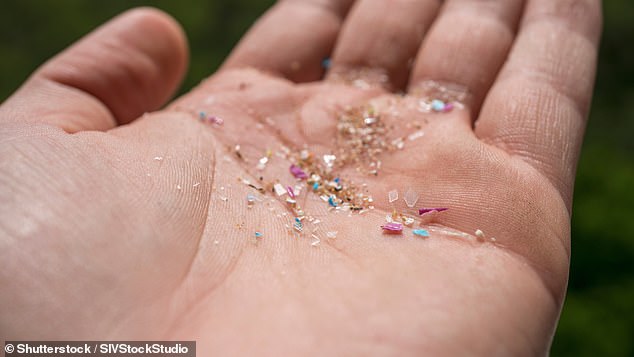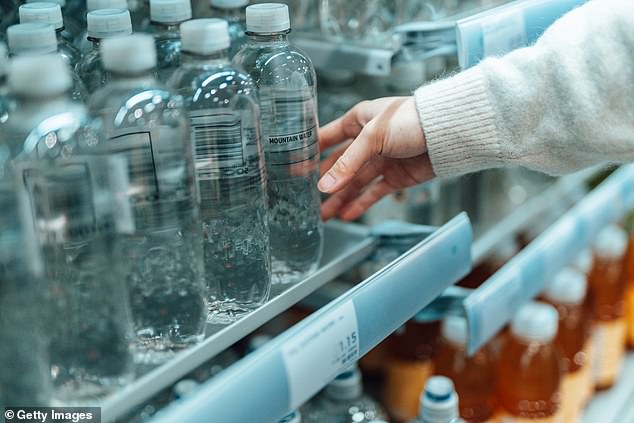There’s probably one hiding in your desk, on your kitchen counter, or on your nightstand.
But up to three-quarters of all the bottled water we drink could contain potentially harmful chemicals linked to cancer, worrying research suggests.
Scientists in Qatar found that between 10 and 78 percent of bottled water contained contaminants, including microplastics, microscopic particles that seep into the bloodstream and are thought to interfere with multiple bodily processes.
Tap water, meanwhile, is much safer to drink since it is subject to “rigorous quality and safety standards,” they said.
Up to three-quarters of all bottled water we drink could contain potentially harmful chemicals linked to cancer, worrying research suggests
Invisible to the human eye, microplastics are plastic fragments as small as two micrometers, or two thousandths of a millimeter.
These particles end up in food, water supplies and even the air when plastic products break down naturally.
A growing body of research has already linked them to the development of cancer, heart disease and dementia – and even lower-quality sperm.
Scientists at Weill Cornell Medicine in Qatar, who conducted the latest study, also found traces of other contaminants, including phthalates and bisphenol A (BPA).
It is believed that they break down and enter the water when bottles are squeezed or the lid is opened and closed repeatedly.
They can also leach into the water if a bottle is exposed to heat, such as if left in a hot room, in a car on a hot day, or outdoors in the sun.
Phthalates, which are used to make plastics more durable, interfere with hormone production in the body.
BPA is a chemical used to make food containers stronger and less vulnerable to corrosion or breakage.
Both have also been linked to infertility, polycystic ovary syndrome, asthma, and some types of cancer.
Britain follows EU safety levels for BPA, recommending a safe daily exposure level of 0.2 nanograms per kilogram of body weight per day.
But both health risks are thought to increase only when exposed to high levels.
Writing in the diary, BMJ Global HealthThe scientists said: “While short-term safety thresholds exist, the long-term effects of these pollutants remain largely unknown.
‘Reliance on bottled water entails significant health, financial and environmental costs, requiring an urgent re-evaluation of its widespread use.’
They also urged restaurants and other public spaces to abandon bottled water and replace it with tap water.

Invisible to the human eye, microplastics are fragments of plastic as small as two micrometers, or two thousandths of a millimeter.
Tap water is much safer to drink because it is subject to “rigorous quality and safety standards” and does not carry the risk of “harmful chemicals leaching from plastic bottles,” the researchers added.
Microplastics have worried scientists for decades.
Researchers are scared, because the smaller things are, the easier it is for them to get inside us.
Previous studies have suggested that the average person ingests around five grams of plastic per week, the equivalent of a credit card.
However, experts have warned that it could be much more, as not all foods have been tested for plastic content.
People are also thought to inhale up to 7,000 microplastics a day, raising concerns that they could be considered alongside asbestos or tobacco as a health threat.

